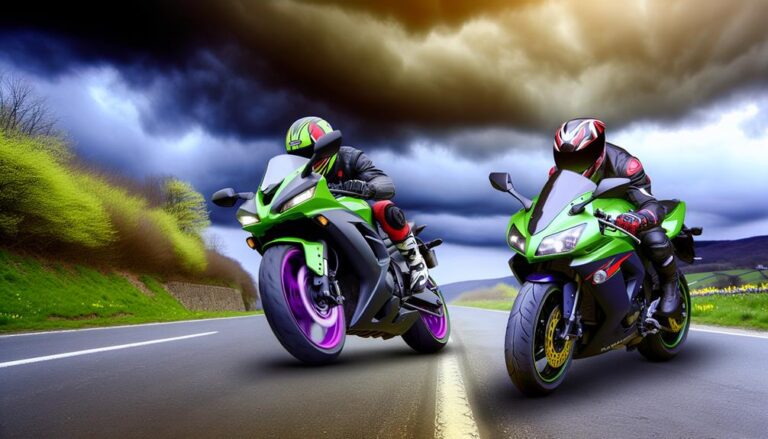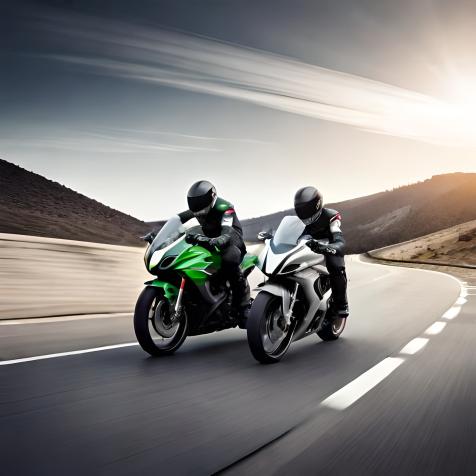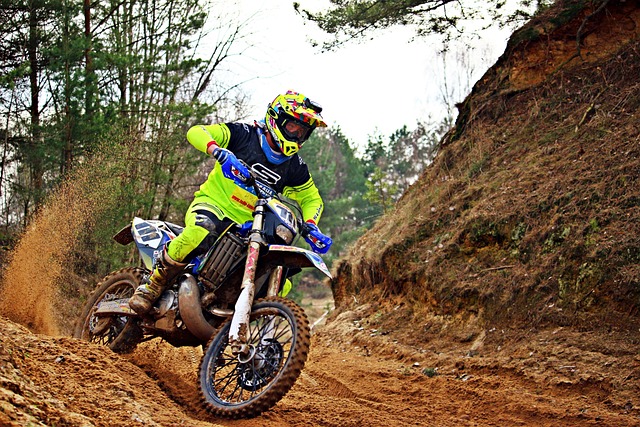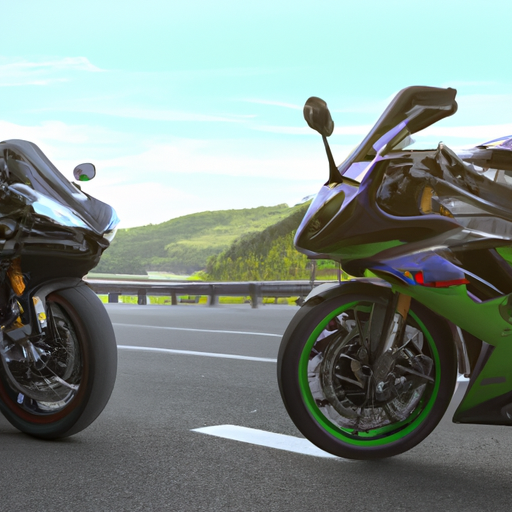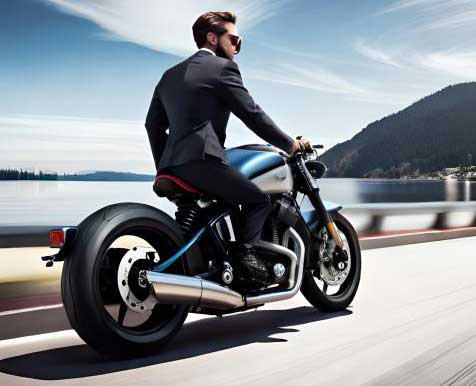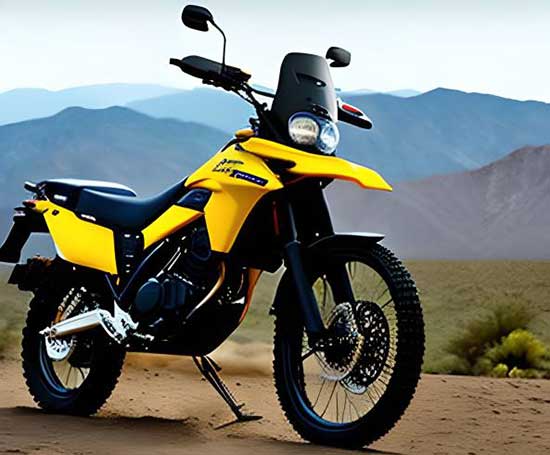The age-old debate between Kawasaki and Honda motorcycles has been the center of attention for motorcycle enthusiasts for decades.
These two Japanese brands have cemented their reputation in the motorcycling world, offering a wide range of models catering to various riding styles and preferences.
But which brand stands out in terms of performance, reliability, design, pricing, and models? Let’s dive in to find out.
Contents
History
Kawasaki
Kawasaki Heavy Industries Motorcycle & Engine Company, established in 1949, started producing motorcycle engines before venturing into complete motorcycle production in the 1960s.
With a focus on power and performance, Kawasaki quickly gained popularity in the motorcycle racing world, winning multiple championships and earning a loyal following.
Honda
Honda Motor Co., Ltd., founded in 1948, began as a manufacturer of motorized bicycles. Within a decade, Honda became the world’s largest motorcycle manufacturer, a position it maintains to this day.
With a diverse range of motorcycles, Honda has a long history of innovation and success in various motorcycling disciplines.
Performance
Engine
Kawasaki is known for its powerful engines that emphasize high-revving performance, often resulting in impressive top speeds and acceleration.
Kawasaki’s flagship models, like the Ninja H2, showcase the brand’s engineering prowess with a supercharged engine that produces jaw-dropping power.
On the other hand, Honda’s engines are celebrated for their balance of power and smoothness. While Honda may not always boast the highest horsepower figures, their engines deliver power in a more linear and controllable manner.
Honda’s flagship models, like the CBR1000RR-R Fireblade SP, combine power and precision for a thrilling ride.
Handling
When it comes to handling, Kawasaki motorcycles are known for their agility and sharpness, which can make them more demanding for inexperienced riders.
However, experienced riders often appreciate the razor-sharp handling that Kawasaki bikes offer.
Honda motorcycles, conversely, have a reputation for their stable and predictable handling, making them an excellent choice for both new and experienced riders.
The chassis and suspension setup on Honda bikes often provides a perfect balance between sportiness and comfort.
Braking
Both Kawasaki and Honda employ top-of-the-line braking systems, including ABS and advanced electronics, to ensure rider safety and confidence.
There is little to differentiate the two brands in this regard, as both manufacturers prioritize braking performance and invest in cutting-edge technology.
Reliability
Honda motorcycles have a well-deserved reputation for their reliability and longevity. Built with precision and high-quality components, Hondas have often been considered the gold standard when it comes to dependability.
Kawasaki motorcycles, while not as renowned for reliability as Honda, still maintain a high level of dependability.
Kawasaki builds its motorcycles with quality components, and many riders have experienced trouble-free ownership.
However, it is essential to follow the manufacturer’s maintenance schedule and use quality parts for both brands to ensure the best possible reliability.
Design
Aesthetics
Kawasaki bikes tend to have a more aggressive and sporty appearance, with sharp lines and bold graphics.
This design language appeals to riders who prefer a bike that stands out and makes a statement. Kawasaki’s iconic green color scheme is instantly recognizable and closely associated with the brand’s racing heritage.
Honda, on the other hand, has a more refined and understated design approach. Their motorcycles often exude elegance and sophistication, with clean lines and well-proportioned silhouettes.
Honda’s design philosophy aims to create timeless motorcycles that appeal to a wide range of riders.
Ergonomics
Kawasaki motorcycles typically have a more aggressive riding position, which can be exhilarating but may not be ideal for long rides.
The ergonomics are designed to prioritize performance and control, which may require some compromise on comfort.
Honda bikes generally offer a more comfortable and upright riding position, making them suitable for various riding styles and longer journeys. With a focus on rider comfort, Honda’s ergonomics cater to a broader audience.
Pricing
Both Kawasaki and Honda offer competitive pricing within their respective model ranges. However, Honda bikes tend to be priced slightly higher, owing to their reputation for reliability and build quality.
Kawasaki, on the other hand, often provides more performance for the money, making them an attractive option for riders on a budget or those looking for the most bang for their buck.
Models
Popular Kawasaki Models
- Kawasaki Ninja H2: A supercharged hyper-sport motorcycle known for its incredible power and cutting-edge technology.
- Kawasaki Z900: A versatile naked bike with a potent engine and sharp handling.
- Kawasaki Versys 650: A reliable and comfortable adventure-touring motorcycle that excels on long journeys.
Popular Honda Models
- Honda CBR1000RR-R Fireblade SP: A track-focused sportbike with advanced electronics and race-inspired performance.
- Honda CB1000R: A stylish and powerful naked bike that combines modern design with a comfortable riding experience.
- Honda Africa Twin: A highly capable adventure motorcycle designed for both on-road and off-road exploration.
Conclusion
Kawasaki and Honda both have their unique strengths, with Kawasaki emphasizing performance and aggressive styling, while Honda focuses on reliability, comfort, and timeless design.
Ultimately, the choice between the two brands will depend on your riding preferences, budget, and desired features.
By considering the aspects discussed in this article, you can make an informed decision and find the motorcycle that best suits your needs.

